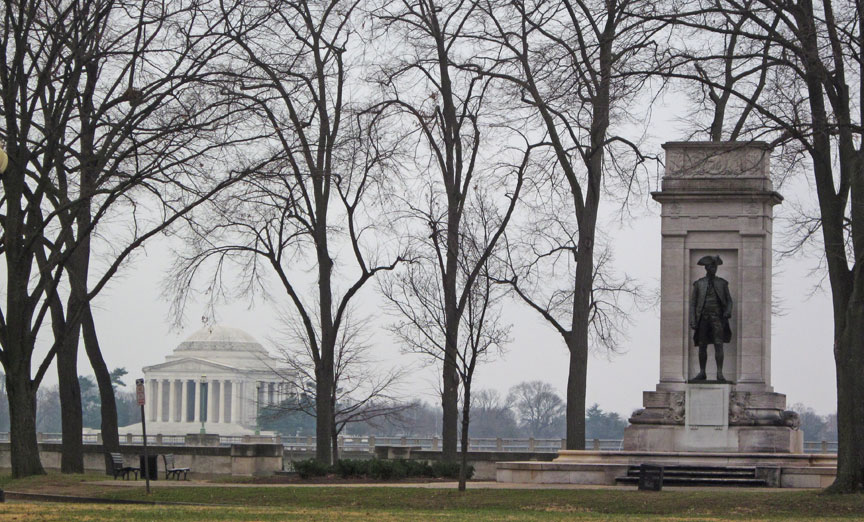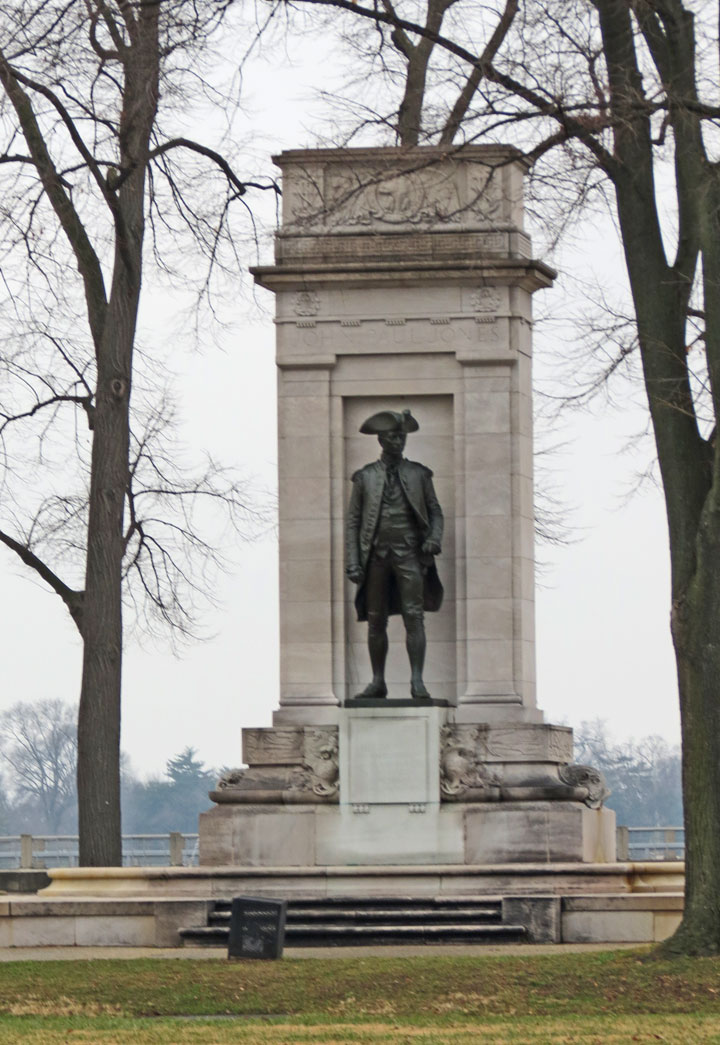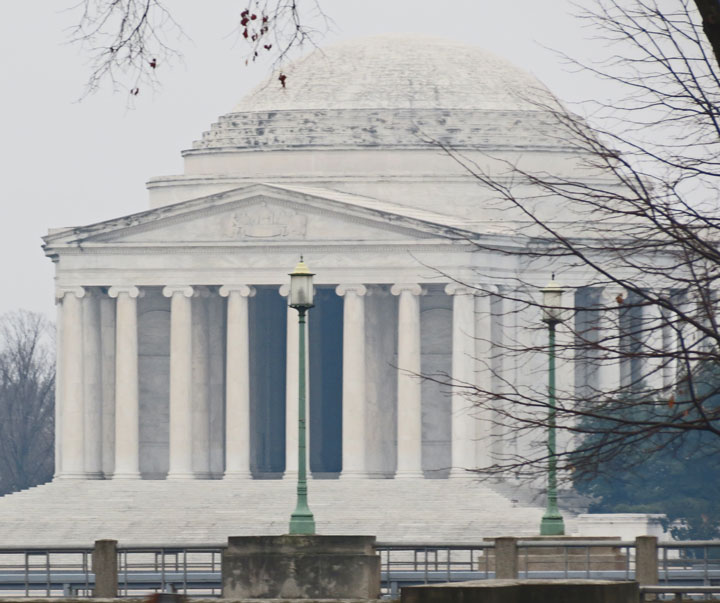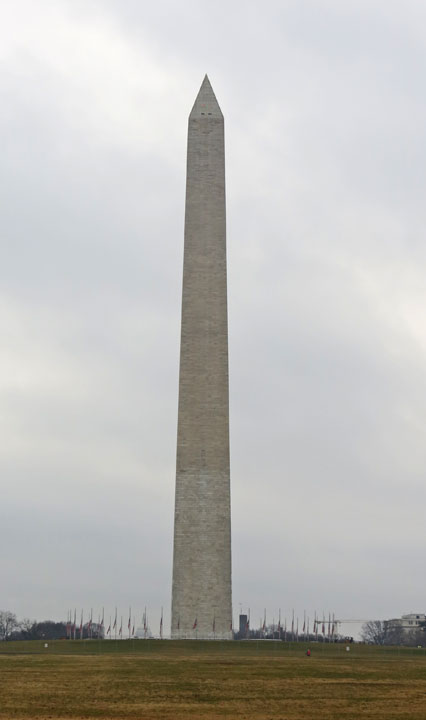

U.S. National World War II Memorial

U.S. National World War II Memorial
The U.S. National World War II Memorial is a National Memorial dedicated to Americans who served in the armed forces and as civilians during World War II. Consisting of 56 pillars and a pair of small triumphal arches surrounding a plaza and fountain, it is located on the National Mall in Washington, D.C., on the former site of the Rainbow Pool at the eastern end of the Reflecting Pool, between the Lincoln Memorial and the Washington Monument.
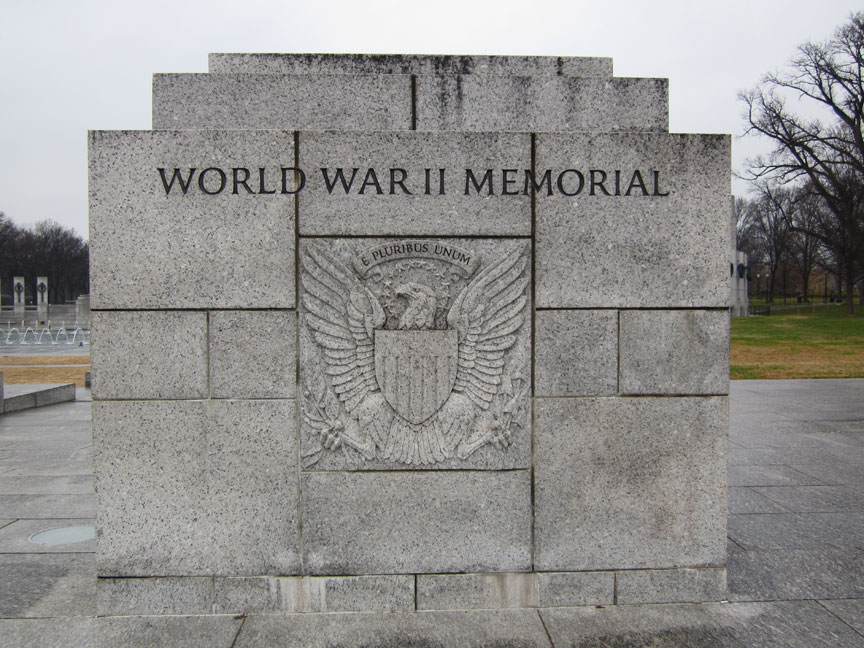
It opened to the public on April 29, 2004, and was dedicated by President George
W. Bush on May 29, 2004, two days before Memorial Day. The memorial is
administered by the National Park Service under its National Mall and Memorial
Parks group. As of 2009, more than 4.4 million people visit the memorial each
year.
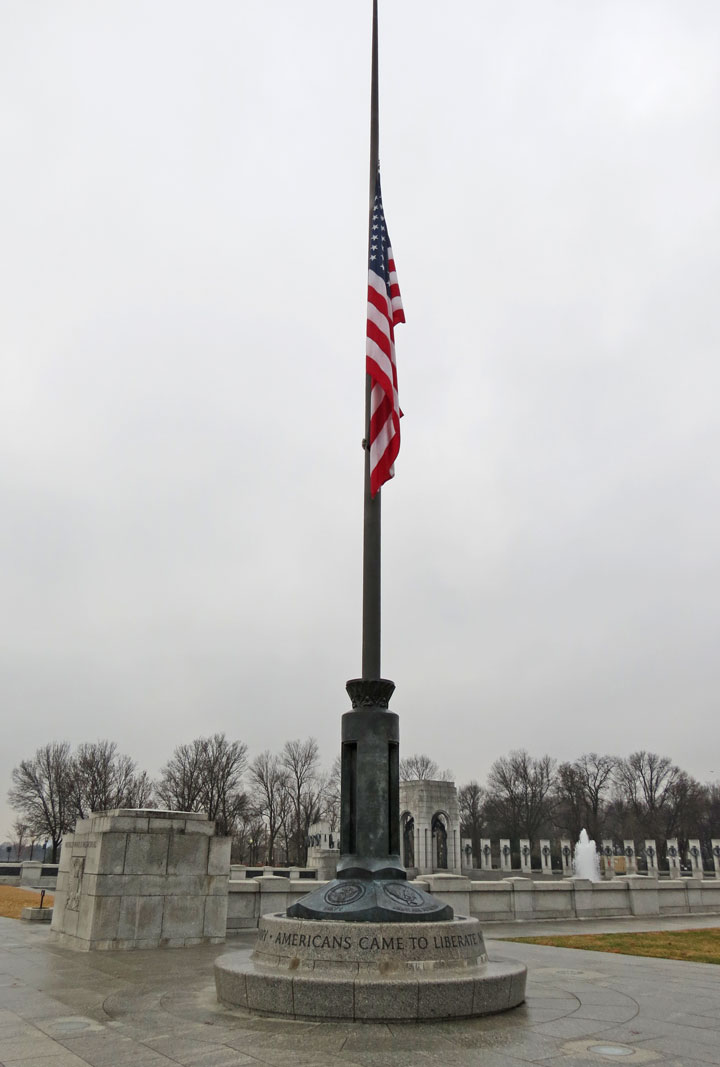
In 1987, World War II veteran Roger Durbin approached Representative Marcy Kaptur, a Democrat from Ohio, to ask if a World War II memorial could be constructed. Kaptur introduced the World War II Memorial Act to the House of Representatives as HR 3742 on December 10. The resolution authorized the American Battle Monuments Commission (ABMC) to establish a World War II memorial in "Washington, D.C., or its environs", but the bill was not voted on before the end of the session, so it was not passed. Two more times, in 1989 and 1991, Rep. Kaptur introduced similar legislation, but these bills suffered the same fate as the first, and did not become law.

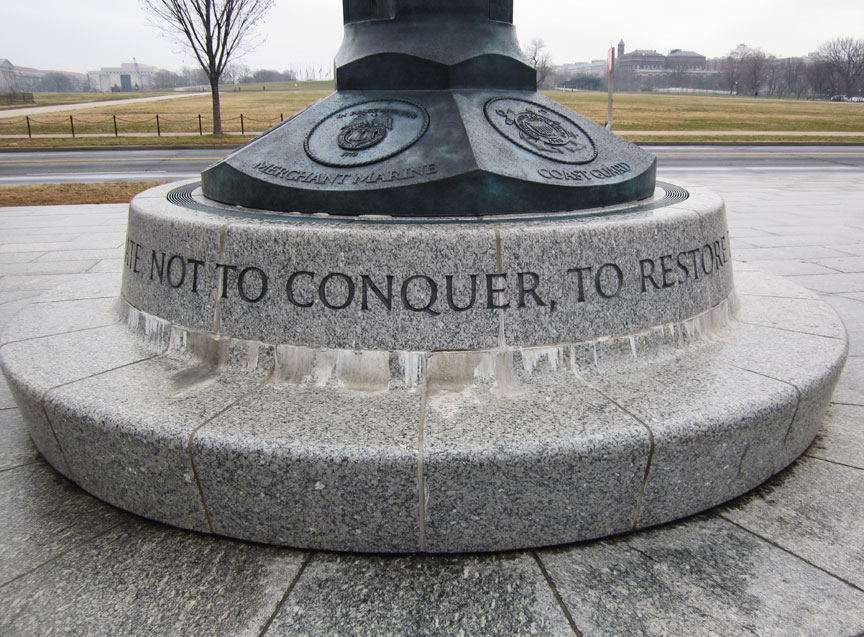
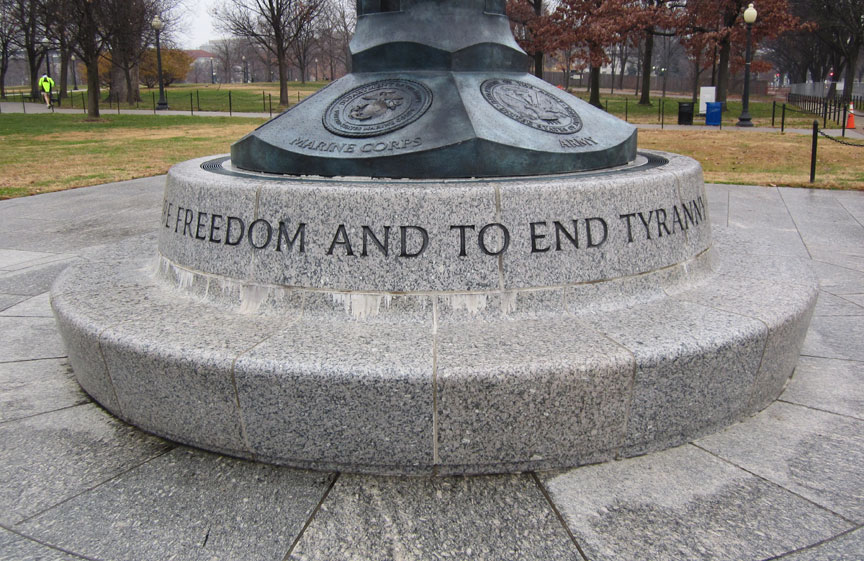
Kaptur reintroduced legislation in the House a fourth time as HR 682 on January
27, 1993, one day after Senator Strom Thurmond (a Republican from South
Carolina) introduced companion Senate legislation. On March 17, 1993, the Senate
approved the act, and the House approved an amended version of the bill on May
4. On May 12, the Senate also approved the amended bill, and the World War II
Memorial Act was signed into law by President Bill Clinton on May 25 of that
year, becoming Public Law 103-32.
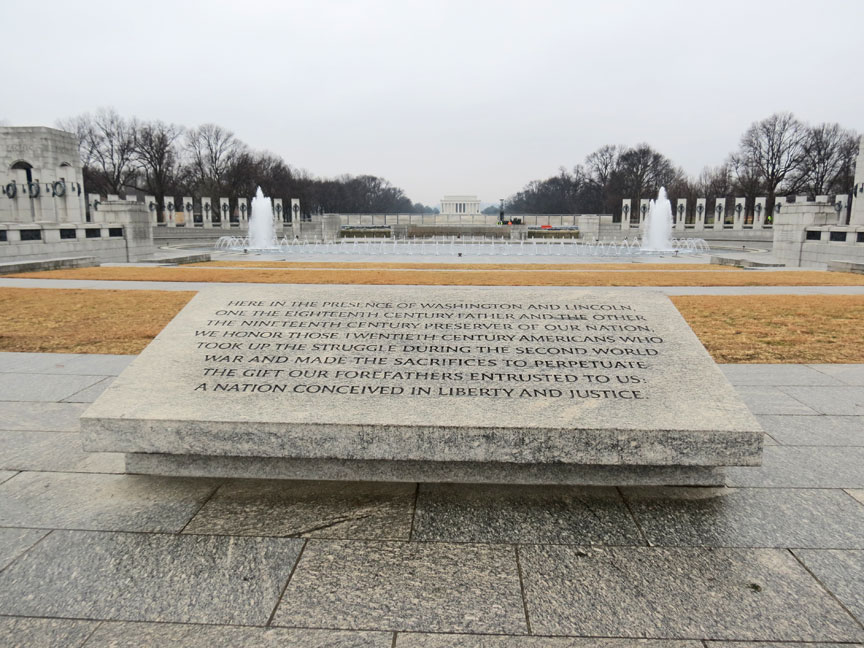
A nationwide design competition drew 400 submissions from architects from around the country. Friedrich St. Florian's initial design was selected in 1997. Over the next four years, St. Florian's design was altered during the review and approval process required of proposed memorials in Washington, D.C. Ambassador Haydn Williams guided the design development for ABMC.
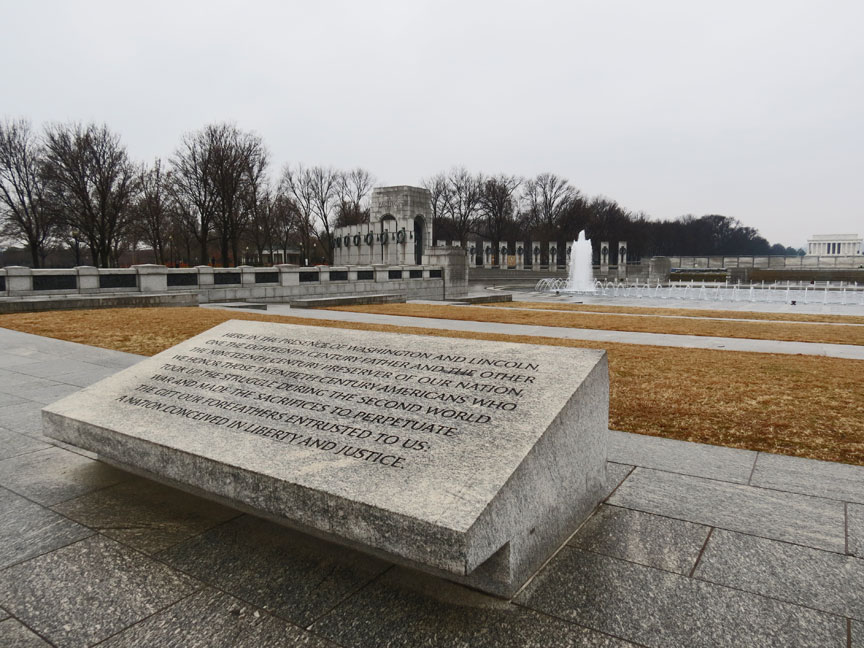
The final design consists of 56 granite pillars, each 17 feet (5 m) tall,
arranged in a semicircle around a plaza with two 43-foot (13 m) triumphal
arches, crafted by Rock of Ages Corporation, on opposite sides. Two-thirds of
the 7.4-acre (30,000 m2) site is landscaping and water. Each pillar is inscribed
with the name of one of the 48 U.S. states of 1945, as well as the District of
Columbia, the Alaska Territory and Territory of Hawaii, the Commonwealth of the
Philippines, Puerto Rico, Guam, American Samoa, and the U.S. Virgin Islands. The
northern arch is inscribed with "Atlantic"; the southern one, "Pacific." The
plaza is 337 ft, 10 in (103.0 m) long and 240 feet, 2 inches (73.2 m) wide, is
sunk 6 feet (1.8 m) below grade, and contains a pool that is 246 feet 9 inches
by 147 feet 8 inches (75.2 × 45.0 m).
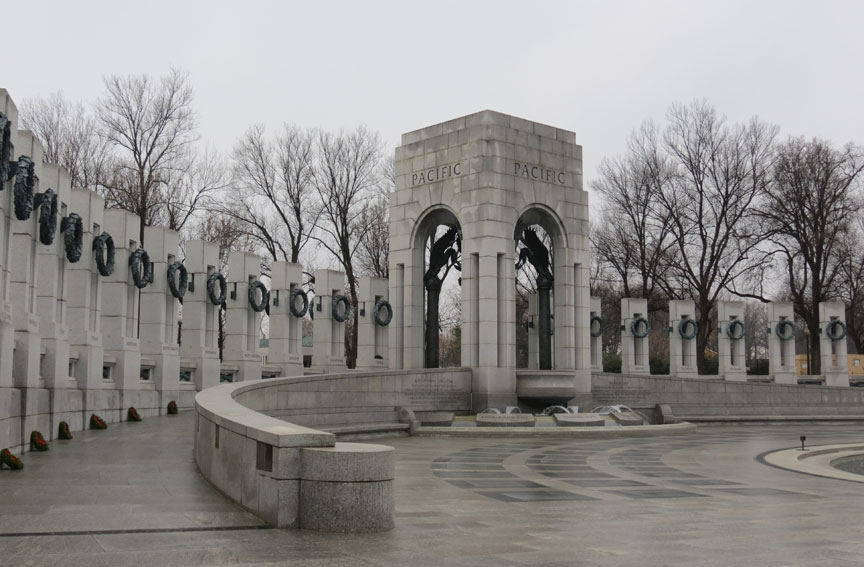
The memorial includes two inconspicuously located "Kilroy was here" engravings.
Their inclusion in the memorial acknowledges the significance of the symbol to
American soldiers during World War II.
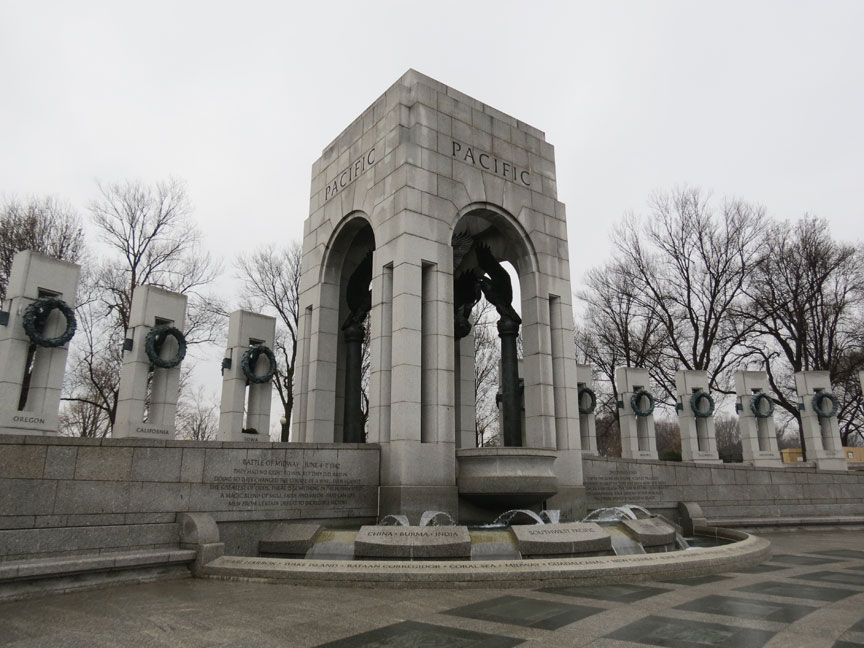
On approaching the semicircle from the east, a visitor walks along one of two
walls (right side wall and left side wall) picturing scenes of the war
experience in bas relief. As one approaches on the left (toward the Pacific
arch), the scenes begin with soon-to-be servicemen getting physical exams,
taking the oath, and being issued military gear. The reliefs progress through
several iconic scenes, including combat and burying the dead, ending in a
homecoming scene. On the right-side wall (toward the Atlantic arch) there is a
similar progression, but with scenes generally more typical of the European
theatre. Some scenes take place in England, depicting the preparations for air
and sea assaults. The last scene is of a handshake between the American and
Russian armies when the western and eastern fronts met in Germany.
Text from Wikipedia
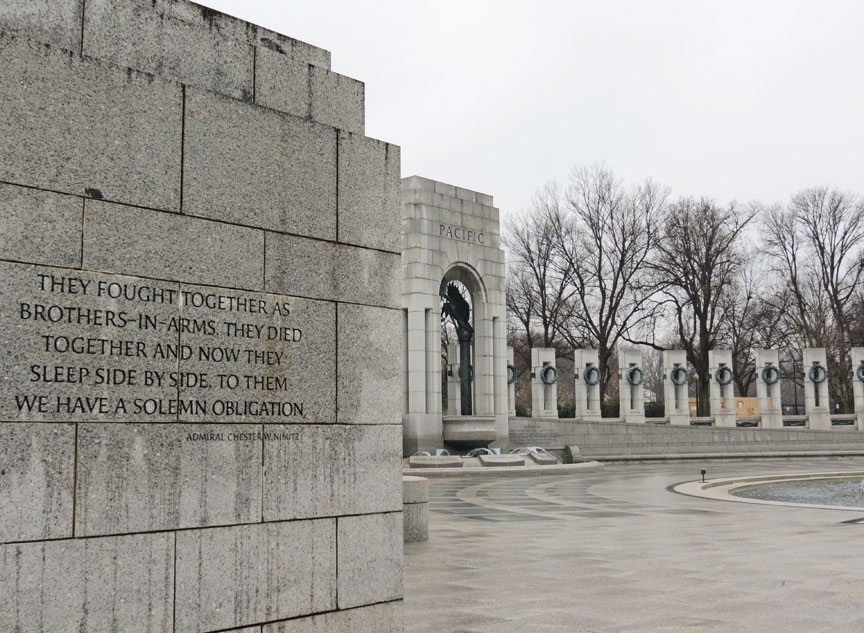

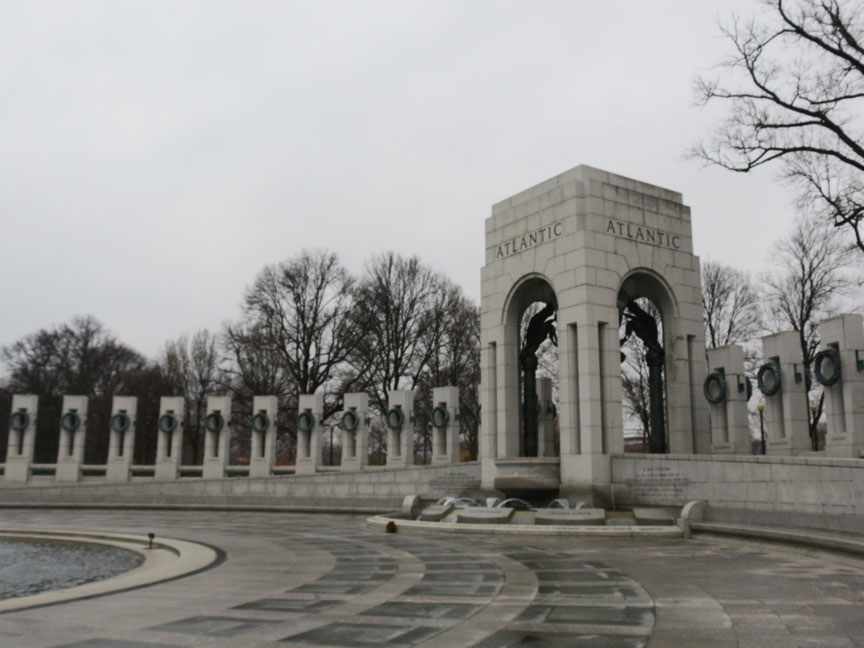

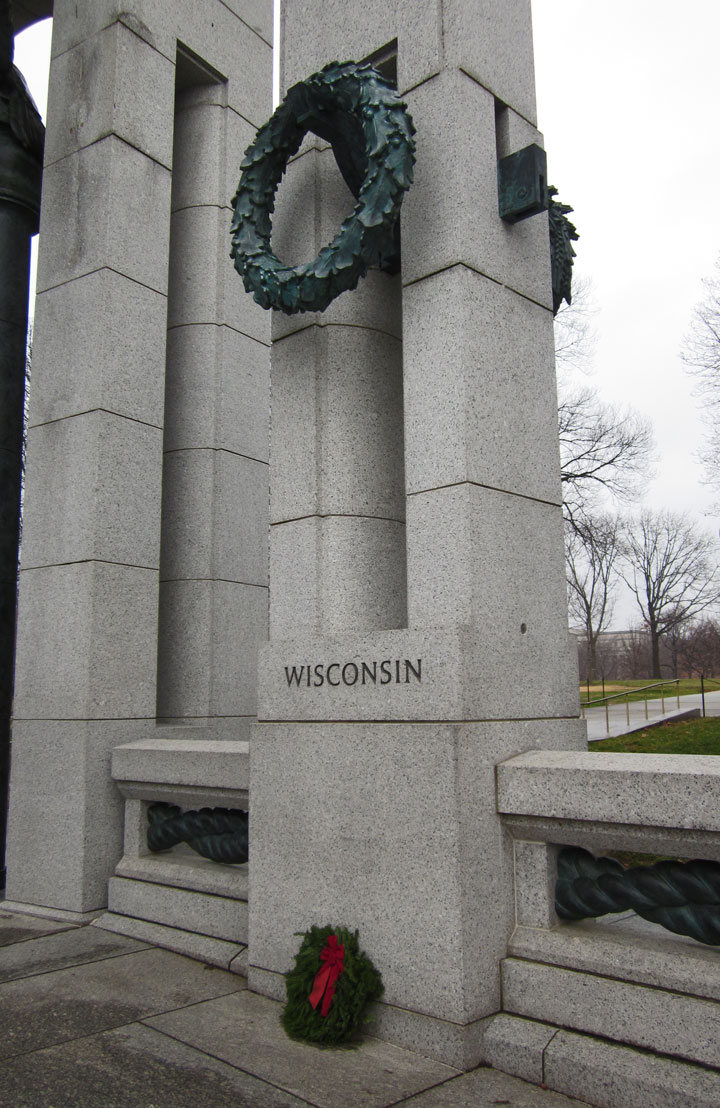
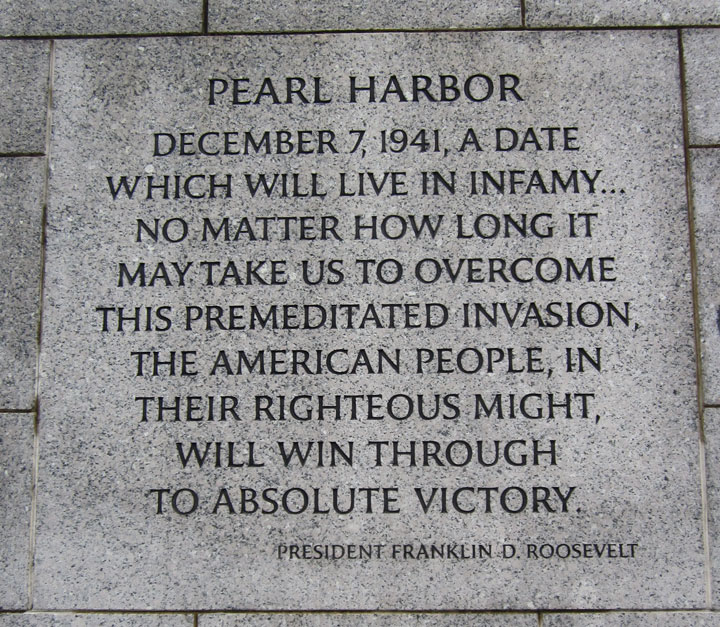
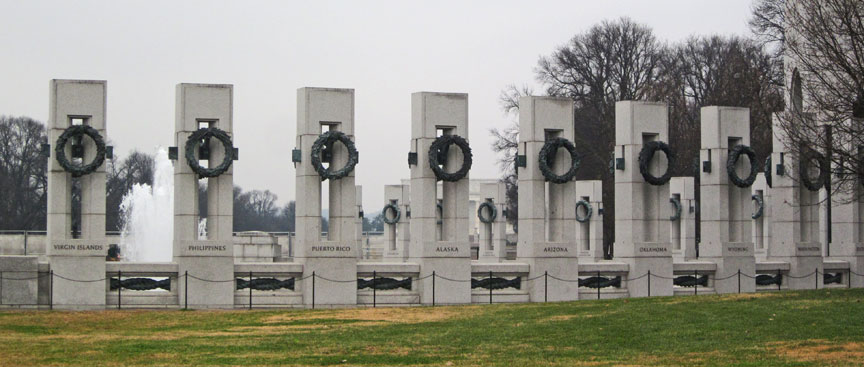

scenes of the war experience
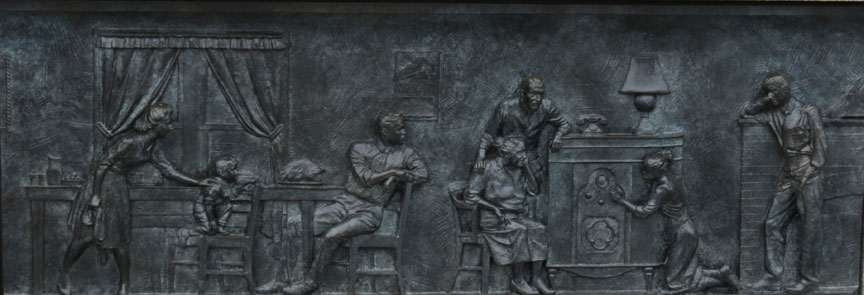
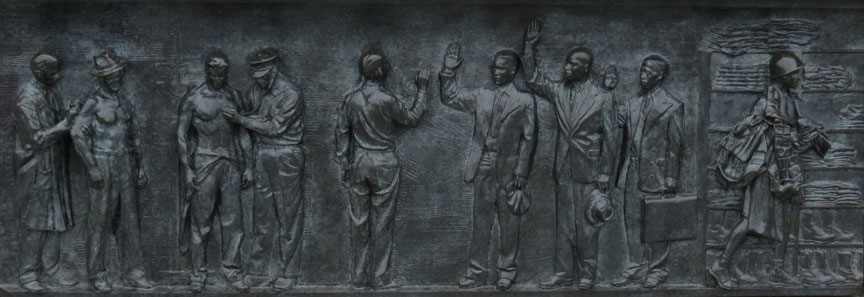

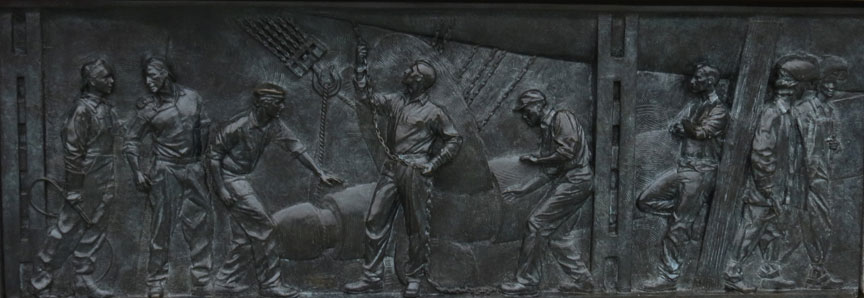

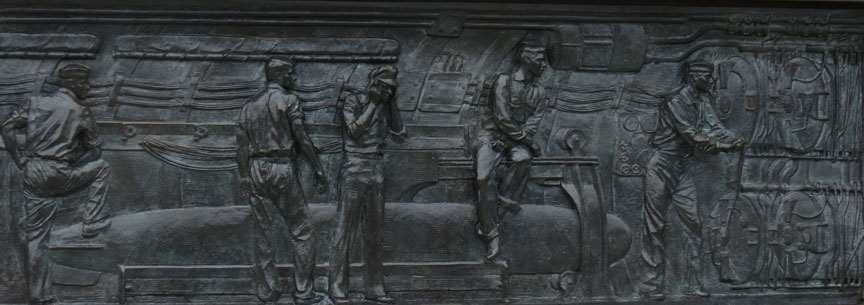
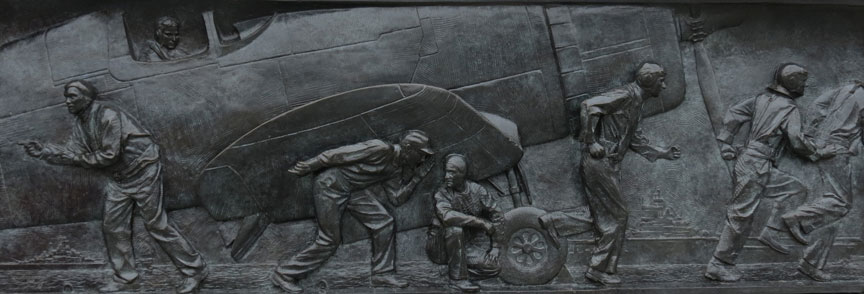

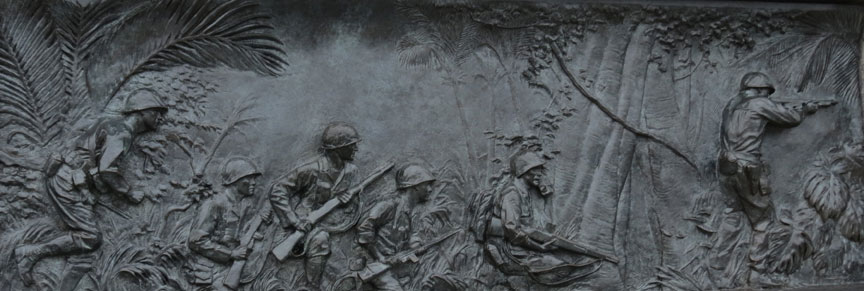

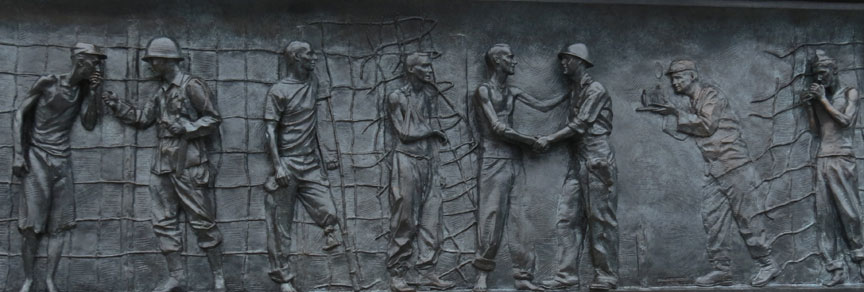

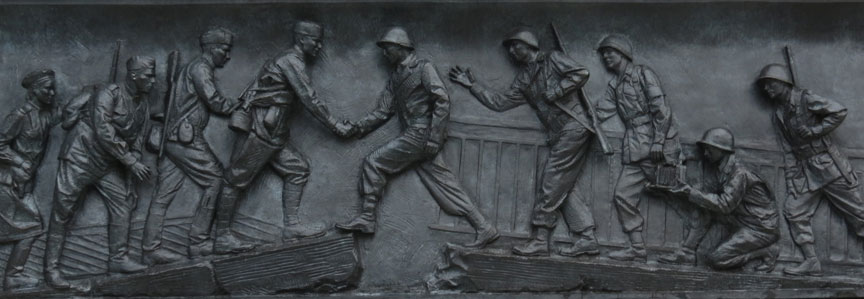
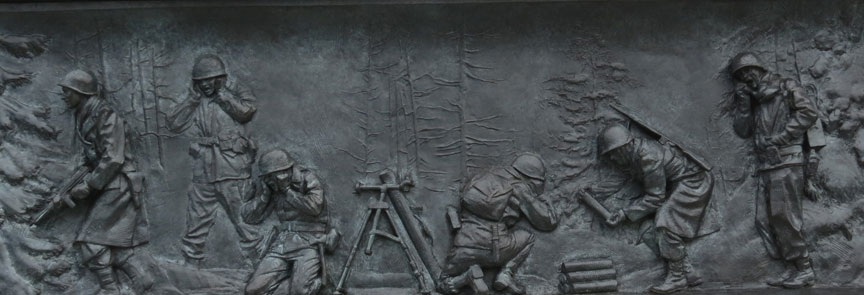
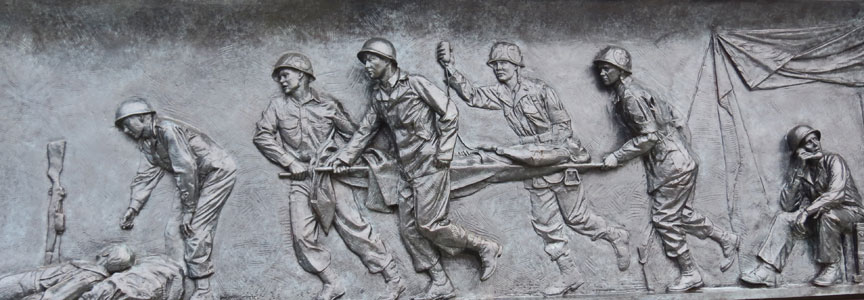

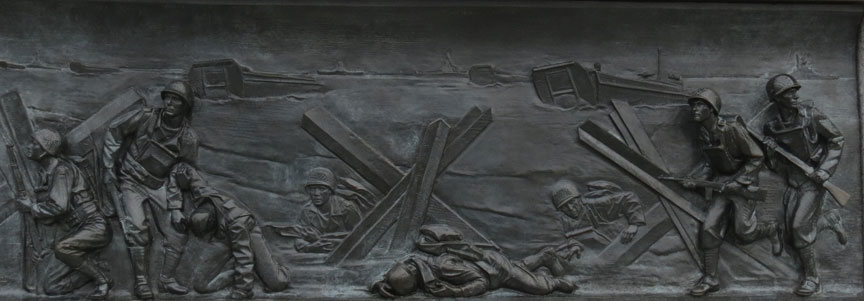


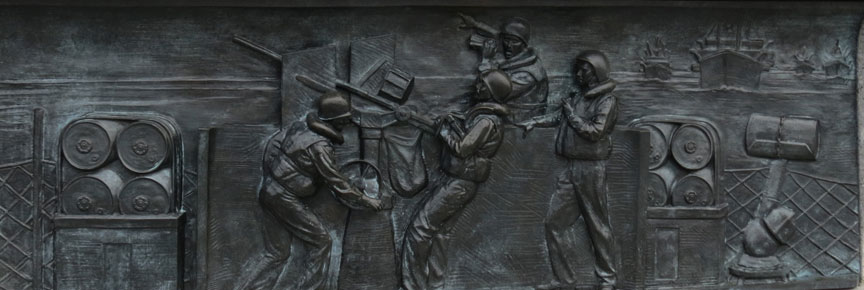




within sight of other monuments
